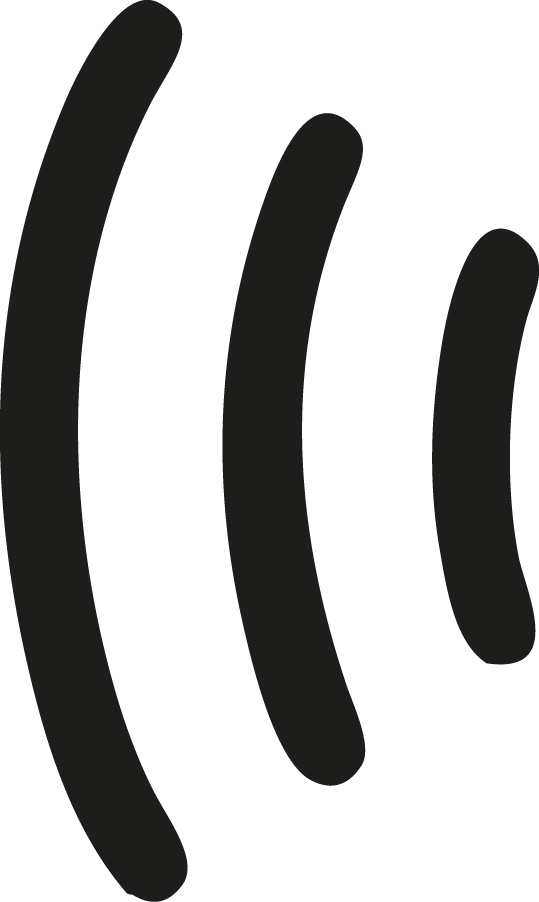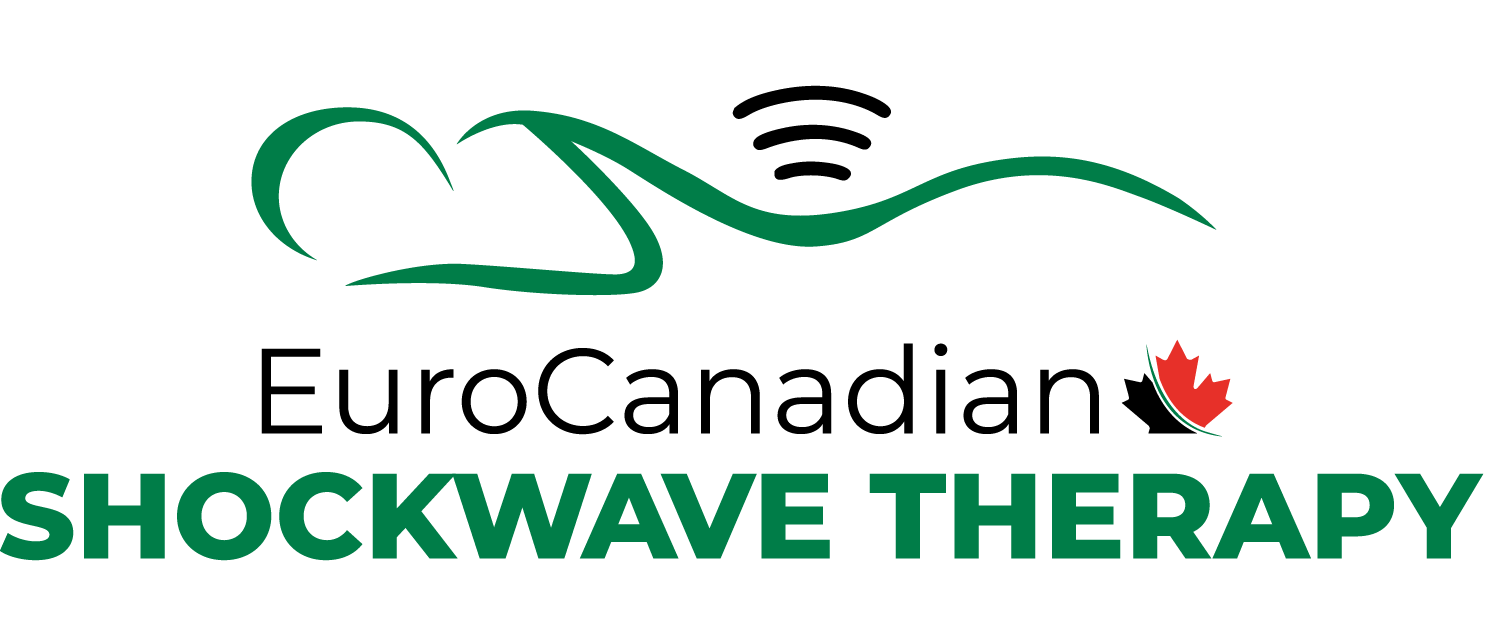

how shockwave therapy can help your pain
Comparing Shockwave Therapy and Radial Pressure Wave Therapy
Shockwave therapy is a physical modality or device that was first developed in Europe (Germany). It can also be referred to as Extracorporeal Shockwave Therapy (ESWT) or Focal Shockwave Therapy (FSWT). When we talk about shockwave therapy in this case we are not talking about electrical stimulation. The shockwaves we are referring to are sound waves…like the sonic boom from an airplane rather than the electric shock from an electrode or plug in the wall. Shockwave therapy uses a mechanical sound wave to stimulate physiological changes within the body, which will promote improved mobility and function of tissues and joints and reduce pain. Shockwave will also stimulate the body to heal itself.
Not all “shockwave therapy” is shockwave therapy. Most clinics in Edmonton and the area use Radial Pressure Wave Therapy (RPWT). This device does not produce an actual shockwave. It can still be effective for pain and dysfunction, but does not tend to be as effective as actual shockwave therapy. Here at Serene Radiance we use both Radial Pressure Wave Therapy and “real” Focal Shockwave Therapy (FSWT).
The Shockwave device we use at EuroCanadian Shockwave uses the same technology as doctor’s use in hospitals to break-up kidney stones (Lithotripsy). It is not the same device. The device we use has been adapted for use on musculoskeletal and urological conditions.
The differences between RPWT and FSWT are as follows:
The main features of RPWT are:
- Can penetrate up to 4 cm into the tissues
- Very effective in reducing muscle and fascia tightness
- Loosen or break down scar tissue and adhesions
- Improves circulation in existing blood vessels
- Reduces inflammation and pain
- Can feel like a deep massage or pulsation
- Does not have to be painful to produce positive results
The main features of FSWT are:
- Can penetrate up to 12 cm into the tissues
- More effective in loosening or breaking down scar tissue and adhesions
- Stimulates stem cell migration to the area of treatment
- Stimulates growth of new blood vessels in the area of treatment
- Promotes healing of tissues
- Can feel like a deep ache, deep pressure or a "needling" sensation
- Does not have to be painful to produce positive results
Most musculoskeletal conditions will require 3-5 treatments usually one week apart. In many cases, improvements can be noticed after the first treatment. Occasionally, improvements are noticed gradually over time after the treatments are completed.
The Storz Medical group in Switzerland manufactured the devices that we use at EuroCanadian Shockwave Therapy. This company specializes in shockwave therapy devices. They have been developing and manufacturing shockwave therapy devices and accessories since 1987.
The devices that we use are also highly adjustable. Therefore, we can set the strength of the treatment to a comfortable level for almost all clients, even if highly sensitive or in acute or severe pain.
All shockwave treatments at EuroCanadian Shockwave Therapy are performed by Gary Wedman, BSc. PT. He is a physiotherapist with 29 years experience in helping people of all ages with a wide variety of injuries and conditions causing pain, decreased mobility, decreased function, and affecting quality of life. He has 7 years experience treating clients almost exclusively with Shockwave Therapy. With Shockwave Therapy, his clients are achieving better results in a shorter period of time than with any other treatment technology or technique he has used in his career.
CONDITIONS treated with SHOCKWAVE THERAPY
Head/Face
- Headaches
- TMJ dysfunction/Jaw pain
- Inflamed sinuses
Neck
- Whiplash/MVA
- Wry neck/Torticollis
- Muscle spasms
- Muscle/fascia tightness
Upper back/chest
- Scoliosis/kyphosis
- Mechanical joint pain
- Postural dysfunction
- Muscle knots and tightness
- Costo-vertebral joint dysfunction
- Costo-chondritis
Shoulders
- Rotator cuff syndrome/tendonitis
- Calcific tendonitis
- Bursitis
- Shoulder arthritis
- Impingement syndrome
- Shoulder muscle tears
- Repetitive strain injuries
Elbow
- Tennis elbow/lateral epicondylitis
- Golfers elbow/medial epicondylitis
- Elbow arthritis
- Olecranon bursitis
- Repetitive strain injuries
Hand/wrist
- Carpal tunnel syndrome
- De Quervain's tenosynovitis
- Hand/wrist Tendonitis
- Hand/wrist arthritis
- Trigger finger
- Ganglions
- Adhesions
Lower back
- Mechanical low back pain
- Lumbar sprains/strains
- Lumbar disc protrusions
- Lumbosacral joint dysfunction
- Sacroiliac joint dysfunction
- Lower back muscle spasm
- Lower back arthritis
- Tailbone strains/fractures
- Sciatica/leg pain
Pelvis
- Chronic pelvic pain syndrome
- Peyonie’s disease
- Erectile dysfunction
- C-section scars/incisions
- Pre & post-op hernia repairs
Hip/Thigh
- Trochanteric bursitis
- Ischial bursitis
- Piriformis syndrome
- Iliotibial band (ITB) syndrome
- Hip joint impingement syndrome
- Labral tears/pathology
- Hip joint arthritis
- Pre & post-op Total hip replacement
- Hip muscle sprains/strains
- Hamstring/quadriceps tears
- Groin pulls/tears
- Hip flexor muscle tightness
Knee
- Patello-femoral syndrome/Chondromalacia Patella
- Osgood-Schlatter disease
- Patellar tendonitis/Jumper’s knee
- Bursitis
- Knee joint arthritis
- Meniscus tears
- Ligament tears
- Pre & Post-op ACL repair
- Pre & post-op Total knee replacement
- Bakers cyst
Ankle/foot
- Achilles tendonitis
- Post-op Achilles tendon repairs
- Heel spurs
- Plantar fasciitis
- Metatarsalgia
- Morton’s neuroma
- Bunion pain
- Gout
- Ankle sprains/strains
- Ankle joint arthritis
Other conditions
- Fibromyalgia
- Osteoarthritis
- Rheumatoid arthritis
- Chronic pain
- Chronic motor vehicle accident injuries
- Non-union fractures
- Post fracture joint and muscle tightness
- Post-op swelling/edema
- Muscle and joint contractures
Treatment fees
Treatment fees are determined by a combination of the length of treatment and the amount of shockwave provided.
|
Treatment |
Description |
Fee |
|
Initial Shockwave Assessment and Treatment |
Your first visit to the clinic. A physiotherapy assessment will be conducted, and you will receive a shockwave therapy treatment. This appointment will last up to 45 minutes. Assessment and/or treatment may be cut short if you are late or have not filled out the Intake form prior to arriving at the clinic. |
$200 |
|
Shockwave – 1 body area |
Treatment of 1 body area, up to 1500 shocks of shockwave and up to 30 minutes of treatment time. |
$160 |
|
Shockwave – 2 body areas |
Treatment of 2 body areas, up to 2500 shocks of shockwave and up to 40 minutes of treatment time. |
$200 |
|
Shockwave – 3 body areas |
Treatment of up to 3 body areas, up to 3500 shocks of shockwave and up to 50 minutes of treatment time. |
$250 |
|
Physiotherapy assessment |
A Physiotherapy assessment will be conducted, followed by discussion of assessment results and possible options for treatment. No physiotherapy or shockwave therapy treatment will be performed. This appointment will last up to 30 minutes. |
$120 |
|
Physiotherapy treatment |
Physiotherapy treatment only. May include joint mobilizations, soft tissue mobilizations, passive stretching, home exercises and/or education. Treatment length is up to 30 minutes. |
$100 |
- There is no government funding available for any of these assessments or treatments
- A portion of the assessment or treatment may be covered under extended benefits
- To reduce costs and keep fees as low as possible, direct billing is not available. You will be emailed a receipt with all required information to submit to your insurance company for reimbursement.
book your appointment now


